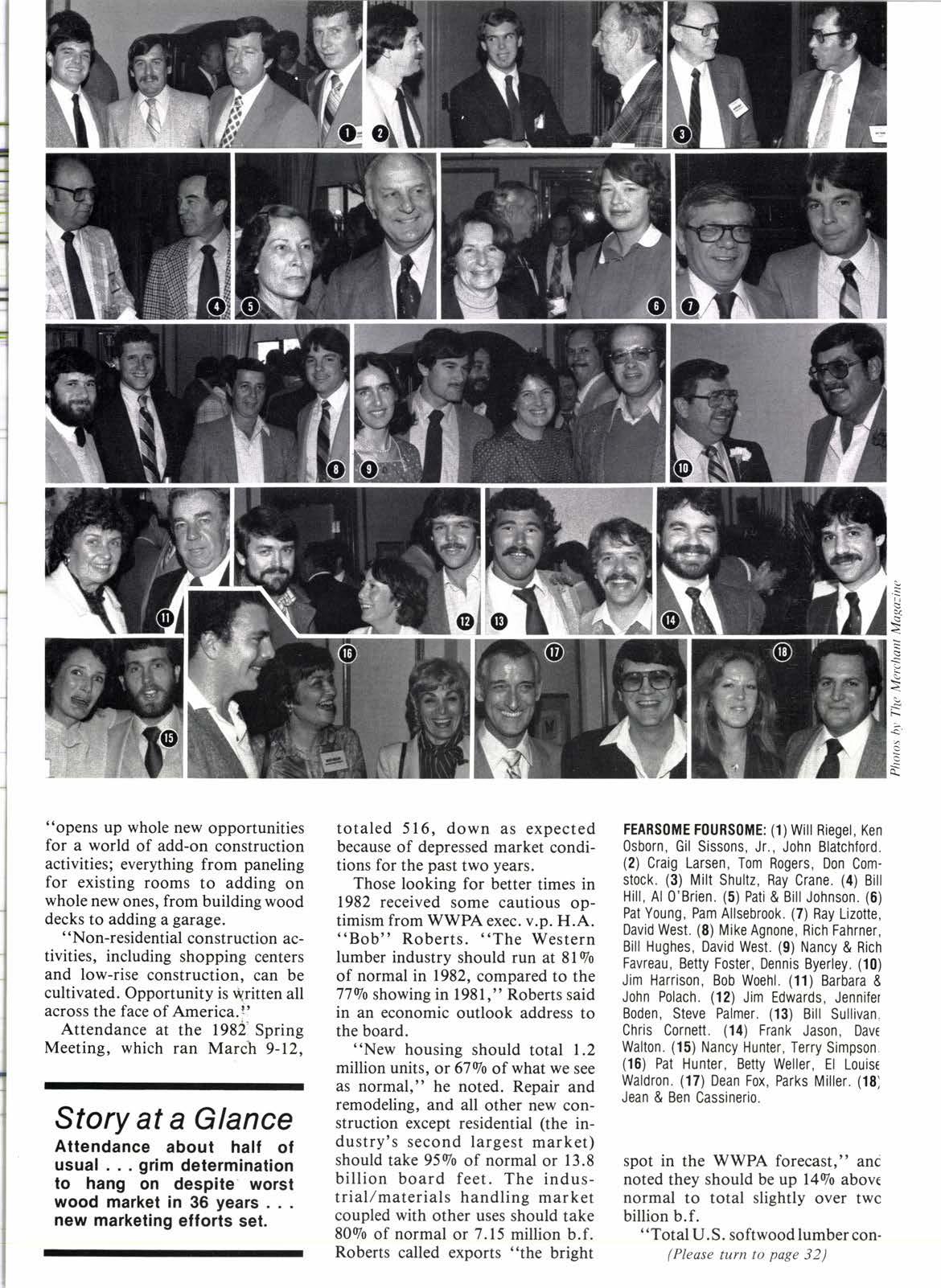
2 minute read
Marketing push begun by WWPA
I FUNDAMENTAL change
in Ithe
Western lumber industry's priorities became official at the Western Wood Products Association's mid-March spring meeting as it took the first steps to meet its most critical marketing challenge since World War IL
Traditionally one of the U.S. lumber industry's strongest marketing-oriented trade groups, the association's attention for the last decade had been turned to "supply side" raw materials problems. At the same time strong national housing markets had generally drawn heavily upon the industry's lumberproducing capacity without need for aggressive marketing activity.
"The days of our apathy toward the marketplace are over," John T. Casey, Jr. president of the Western Wood Products Association told the San Francisco meeting. "We can no longer accept industry-wide marketing programs that have deterioratgd to unacceptable levels. "
He voiced strong support for marketing programs that "will provide the Western lumber industry with the opportunity to shape its own destiny. ' '
Casey noted much of the focus of the new efforts would be aimed at markets other than new home construction, with special attention to altering and expanding America's 82 million existing homes.
"This housing situation," he said,
"opens up whole new opportunities for a world of add-on construction activities; everything from paneling for existing rooms to adding on whole new ones, from building wood decks to adding agarage.
" Non-residential construction activities, including shopping centers and low-rise construction, can be cultivated. Opportunity is vyritten all across the face of America.!'
Attendance at the 1982'spring Meeting, which ran March 9-12,
Story at a Glance
Attendance about half of usual . grim determination to hang on despite' worst wood market in 36 years . new marketing efforts set.
totaled 516, down as expected because of depressed market conditions for the past two years.
Those looking for better times in 1982 received some cautious optimism from WWPA exec. v.p. H.A. "Bob" Roberts. "The Western lumber industry should run at 8lqo of normal in 1982, compared to the 7790 showing in 1981," Roberts said in an economic outlook address to the board.

"New housing should total 1.2 million units, or 6790 of what we see as normal," he noted. Repair and remodeling, and all other new construction except residential (the industry's second largest market) should take 9590 of normal or 13.8 billion board feet. The industrial/materials handling market coupled with other uses should take 8090 of normal or 7.15 million b.f. Roberts called exports "the bright spot in the WWPA forecast," ani noted they should be up l49o above normal to total slightly over twc billion b.f.
FEARS0ME F0URS(IME: (1)Will Riegel, Ken 0sborn, Gil Sissons, Jr., John Blatchford. (2) Craig Larsen, Tom Rogers, Don Comstock. (3) Milt Shultz, Ray Crane. (4) Bill Hill, Al 0'Brien. (5) Pati & Bill Johnson. (6) Pat Young, Pam Allsebrook. (7) Ray Lizotte, David West. (8) Mike Agnone, Rich Fahrner, Bill Hughes, David West. (9) Nancy & Rich Favreau, Betty Foster, Dennis Byerley. (10) Jim Harrison, Bob Woehl. (11) Barbara E John Polach. (12) Jim Edwards, Jennifer Boden, Steve Palmer. (13) Bill Sullivan, Chris Cornett. (14) Frank Jason, Dave Walton. (15) Nancy Hunter, Terry Simpson (16) Pat Hunter, Betty Weller, El Louise Waldron. (17) Dean Fox, Parks Miller. (18) Jean & Ben Cassinerio.
"Total U. S. softwood lumber con(Please turn to page 32)









